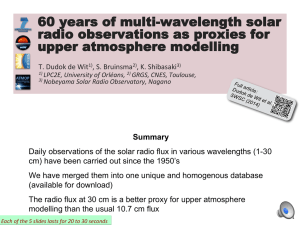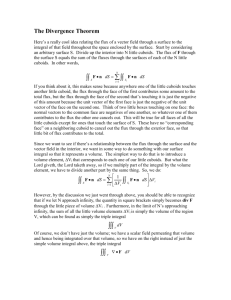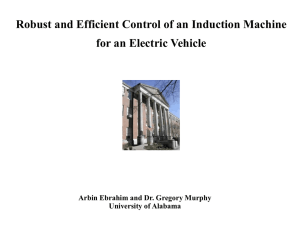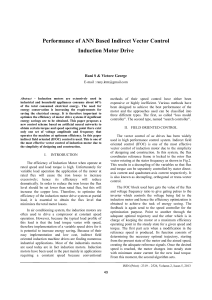Fonction applicatives RSX FR
advertisement
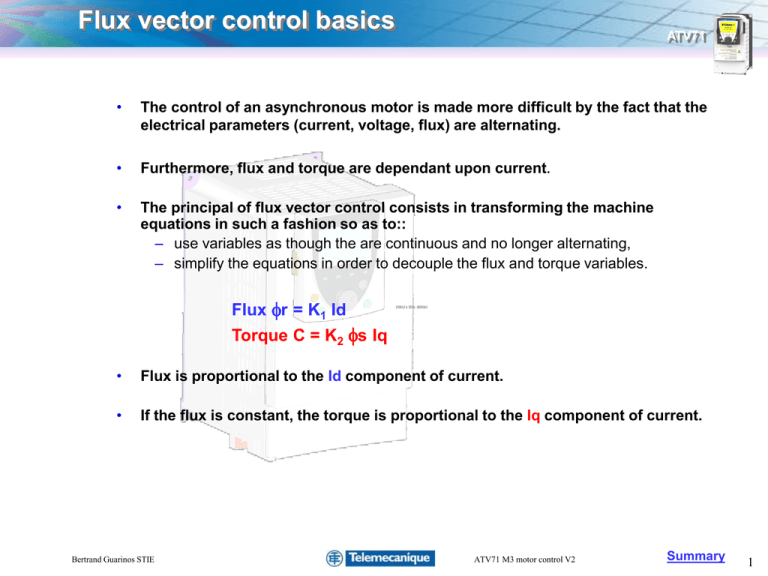
Flux vector control basics ATV71 • The control of an asynchronous motor is made more difficult by the fact that the electrical parameters (current, voltage, flux) are alternating. • Furthermore, flux and torque are dependant upon current. • The principal of flux vector control consists in transforming the machine equations in such a fashion so as to:: – use variables as though the are continuous and no longer alternating, – simplify the equations in order to decouple the flux and torque variables. Flux r = K1 Id Torque C = K2 s Iq • Flux is proportional to the Id component of current. • If the flux is constant, the torque is proportional to the Iq component of current. Bertrand Guarinos STIE ATV71 M3 motor control V2 Summary 1 Flux vector control basics • • • ATV71 Vector control allows the controller to separate the torque producing current and the flux producing current This is analogous to a DC motor with separate excitation. Flux is maintained constant and set at a point to obtain constant torque over the entire speed range. Asynchronous Motor DC Motor r r s s Id Flux I inductive Torque I induced Iq • • The vector control has a speed estimation function that allows the full time correction of torque and flux. Thus the performance is much better, for low speed torque, dynamic response, and speed precision compared to a scalar volts/Hertz law. Bertrand Guarinos STIE ATV71 M3 motor control V2 Summary 2 Flux vector control basics ATV71 Comparison of U/F and Vector control Flux Vector Control U/F Law Automatic Compensation (Rs and slip) Manual Compensation (U0 voltage at origin) C/Cn C/Cn 200 % 100% F hz 1 3 Bertrand Guarinos STIE FrS F hz 5 10 ATV71 M3 motor control V2 FrS Summary 3







